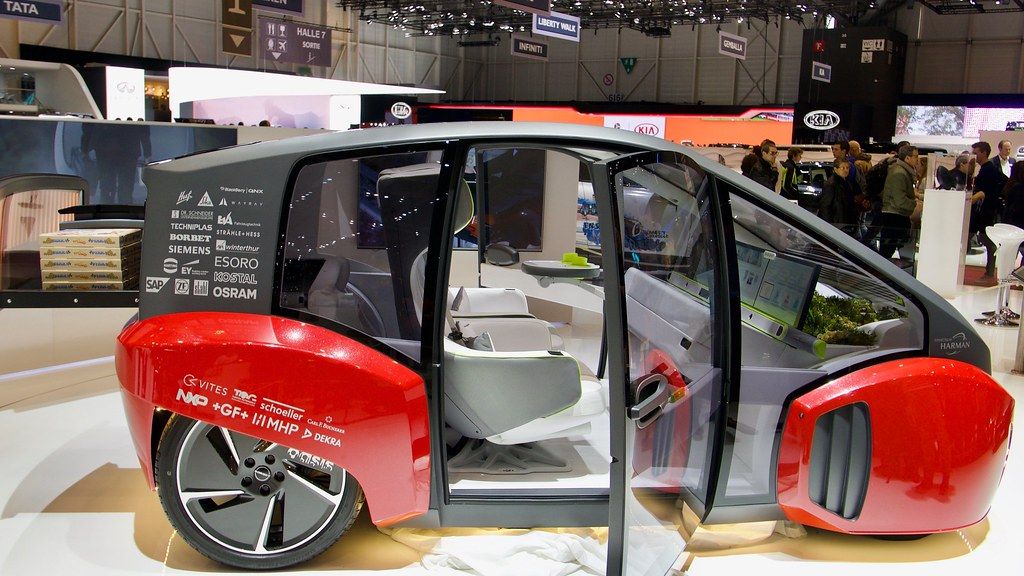
The car buying journey often begins with an exciting search for the perfect vehicle at the right price. While many consumers meticulously compare sticker prices, financing options, and immediate features, a crucial aspect that often goes overlooked is the long-term cost of ownership, particularly maintenance and repairs. What might initially appear to be a bargain can quickly transform into a financial burden if unexpected upkeep expenses aren’t factored into the equation.
Understanding these hidden costs is paramount for making an informed decision that truly benefits your wallet over the years. Our comprehensive analysis, drawing upon rigorous data from CarEdge, delves into the real-world expenditures drivers face after leaving the dealership. We’ve compiled essential insights to help you identify both the vehicles that demand significant long-term investment in maintenance and those that offer reassuringly low upkeep, ensuring your purchase aligns with your financial foresight.
In this first section, we will focus on the vehicles that challenge the notion of affordability, revealing seven cars and trucks that, despite their initial price points, are among the most expensive to maintain over a ten-year period. By examining their average maintenance and repair costs relative to their new price, we aim to provide a transparent look at where your money truly goes, empowering you to navigate the automotive market with greater confidence and a clearer understanding of true ownership costs.
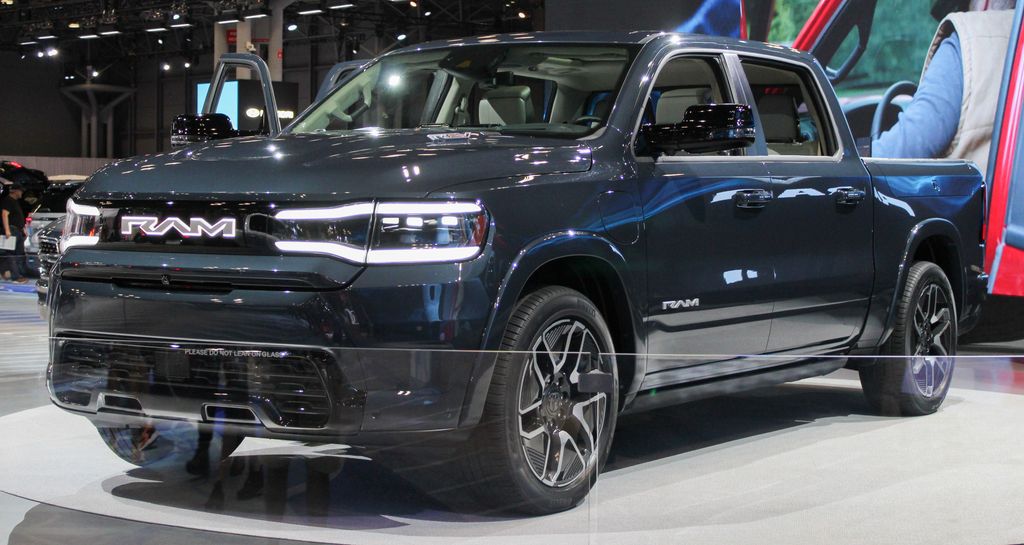
1. **Ram 1500**The Ram 1500, a popular light-duty truck, presents a significant anomaly when it comes to maintenance expenses. While vehicles in its class are typically associated with minimal upkeep costs, the Ram 1500 defies this trend. Our data from CarEdge reveals a surprising reality for prospective owners, indicating that this particular model stands out for its high long-term financial demands. This finding directly challenges conventional expectations within the light-duty truck segment, urging buyers to look beyond initial purchase costs.
Compared to its direct competitors, the Ram 1500 is projected to incur the highest maintenance costs over a ten-year period, reaching an estimated $18,072. This figure is a substantial consideration for any consumer, especially those who rely on their trucks for daily work or long-term utility. The disparity between its segment’s typical affordability for upkeep and its actual projected costs is striking, positioning it as an outlier that warrants careful review before purchase.
The financial impact becomes even more pronounced when considering the maintenance cost relative to the vehicle’s new price. At 55.1% of its MSRP of $32,795, the long-term maintenance expenditures for the Ram 1500 represent more than half of its original purchase price. This ratio highlights a critical factor for budget-conscious consumers: a truck that may seem reasonably priced upfront can become a significant money pit, underscoring the importance of comprehensive financial planning when investing in a vehicle.
Car Model Information: 2017 RAM 1500 Express
Name: Dodge Ram / Ram pickup
Caption: 2017 Ram 1500 Express
Manufacturer: Dodge
ModelYears: 1981–present
Production: October 1980 – present
Class: Pickup truck#Full-size pickup truck,Pickup truck#Heavy-duty pickup truck
Layout: Front-engine, rear-wheel-drive layout,rear-wheel drive
Predecessor: Dodge D series
Categories: 1990s cars, 2000s cars, 2010s cars, 2020s cars, All-wheel-drive vehicles
Summary: The Ram pickup (marketed as the Dodge Ram until 2010 when Ram Trucks was spun-off from Dodge) is a full-size pickup truck manufactured by Stellantis North America (formerly Chrysler Group LLC and FCA US LLC) and marketed from 2010 onwards under the Ram Trucks brand. The current fifth-generation Ram debuted at the 2018 North American International Auto Show in Detroit, Michigan, in January of that year.
Previously, Ram was part of the Dodge line of light trucks. The Ram name was introduced in October 1980 for model year 1981, when the Dodge D series pickup trucks and B series vans were rebranded, though the company had used a ram’s-head hood ornament on some trucks as early as 1933.
Ram trucks have been named Motor Trend magazine’s Truck of the Year eight times; the second-generation Ram won the award in 1994, the third-generation Ram heavy-duty won the award in 2003, the fourth-generation Ram Heavy Duty won in 2010 and the fourth-generation Ram 1500 won in 2013 and 2014, and the current fifth-generation Ram pickup became the first truck in history to win the award four times, winning in 2019, 2020, 2021 and most recently, 2025.
Get more information about: Ram pickup
Buying a high-performing used car >>>
Brand: Ram Model: 1500
Price: $18,886 Mileage: 101,000 mi.
Read more about: Beyond the Showroom Shine: A Mechanic and Enthusiast’s Unvarnished Truth About 13 Cars and Why New Isn’t Always Better

2. **BMW X1**Luxury vehicle ownership often comes with the expectation of higher maintenance costs, and the BMW X1 regrettably confirms this reality. For those drawn to the prestige and performance of a BMW, the upfront cost might be a secondary concern, yet the long-term financial commitment for its upkeep is particularly steep. This model demonstrates that even within the luxury segment, some vehicles carry a disproportionately high burden of maintenance expenses over time, which can surprise even seasoned luxury car owners.
Over a decade of ownership, the BMW X1 is estimated to accumulate approximately $17,691 in average maintenance and repair costs. This figure is not merely a number but a substantial portion of the vehicle’s overall financial footprint. Such considerable expenses can significantly impact a buyer’s budget, especially when juxtaposed with the initial investment. Consumers should approach this vehicle with a clear understanding that the allure of a luxury brand often translates into ongoing, considerable service requirements.
The ratio of maintenance cost to new price for the BMW X1 stands at an alarming 49.9%. This means that over ten years, owners can expect to spend nearly half of the car’s original $35,400 MSRP on keeping it running smoothly. This percentage vividly illustrates that despite its entry-level luxury positioning, the X1 is far from a budget-friendly option in the long run. It serves as a potent reminder that the appeal of a premium badge often conceals substantial recurring expenditures, urging consumers to weigh glamour against practicality.
Car Model Information: 2017 BMW X1 xDrive 28i
Name: BMW X1
Caption: BMW X1 (U11)
Manufacturer: BMW
Production: 2009–present
Class: Subcompact luxury crossover SUV
BodyStyle: SUV
Layout: Unbulleted list
Categories: 2010s cars, 2020s cars, All-wheel-drive vehicles, Articles with short description, BMW vehicles
Summary: The BMW X1 is a line of cars produced by German marque BMW since 2009. It is in the subcompact luxury crossover class, and the first-generation X1 was based on the E90 3 Series and offered rear-wheel drive layout as standard. At its introduction in 2009, it was positioned as the smallest SUV in BMW line-up, below the X3 prior to the launch of the smaller X2. The X1 essentially is aiming a wider range of customers due to its smaller size, increased efficiency, and a lower price tag due to the all-wheel drive layout (xDrive) being optional.
The second-generation X1 marked the switch to a front-wheel-drive-based layout using the UKL2 platform shared with the BMW 2 Series Active Tourer and the Mini Countryman. Despite its name, it is now only the second smallest SUV produced by BMW since the introduction of the X2. The third and current generation was released in 2022.
Get more information about: BMW X1
Buying a high-performing used car >>>
Brand: BMW Model: X1
Price: $13,480 Mileage: 105,872 mi.
Read more about: The Revival Circuit: 12 Forgotten Concepts That Changed the Automotive Industry

3. **BMW X2**Following closely behind its sibling, the BMW X2 reinforces the pattern of high maintenance costs within the BMW lineup. This model, while sharing many characteristics with the X1, also shares its propensity for demanding significant financial outlays for service and parts. The consistent trend across these BMW models suggests a brand philosophy that does not prioritize minimizing long-term ownership expenses, placing a substantial burden on the consumer.
The primary drivers behind the X2’s high maintenance are its expensive service rates and the considerable cost of its parts. Over a ten-year span, the average maintenance and repair costs are projected to be $17,764. This figure, though slightly higher in absolute terms than the X1, reveals that the core issue of expensive upkeep is systemic within these luxury compact SUVs. Buyers must prepare for premium-level service charges that align with the vehicle’s high-end classification, rather than its initial market positioning.
Interestingly, the X2’s maintenance cost versus new price percentage is 48.5%, which is marginally lower than the X1’s 49.9%. This slight difference is attributed solely to the X2’s higher starting MSRP of $36,600, rather than any inherent reduction in maintenance expenses. It highlights that while the percentage might appear slightly better, the actual cost of ownership remains exceptionally high. For consumers, this translates to nearly half of the vehicle’s purchase price being dedicated to maintenance over a decade, a figure that demands serious consideration.
Car Model Information: 2018 BMW X2 xDrive28i
Name: BMW X2
Manufacturer: BMW
Production: November 2017 – October 2022,November 2023 – present
Class: Subcompact luxury crossover SUV
BodyStyle: SUV
Layout: ubl
Related: BMW X1
Categories: 2020s cars, All-wheel-drive vehicles, Articles with short description, BMW vehicles, Cars introduced in 2017
Summary: The BMW X2 is a subcompact luxury crossover SUV produced by BMW since 2017. It is marketed as a sports activity coupé (SAC), it is considered a sportier and less practical alternative to the X1, as is the case with other even-numbered X models with its respective counterparts.
Get more information about: BMW X2
Buying a high-performing used car >>>
Brand: BMW Model: X2
Price: $15,300 Mileage: 74,357 mi.
Read more about: Navigating the Electric Future: Our Expert Picks for the Top 12 EVs You Can Buy Right Now
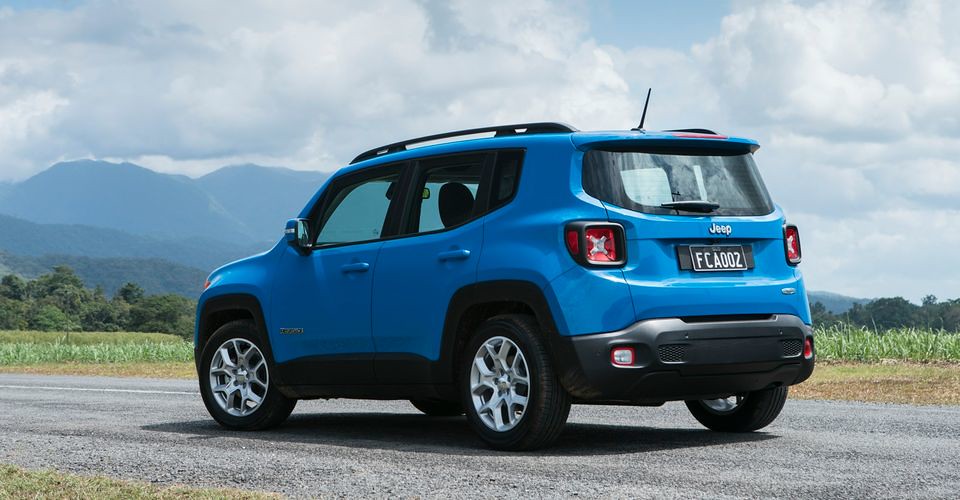
4. **Jeep Renegade**The Jeep Renegade, a compact SUV, presents a notable discrepancy between its size and its long-term maintenance demands. Despite its relatively small stature, the Renegade is poised to incur a substantial amount of servicing costs, challenging the perception that smaller vehicles are inherently cheaper to maintain. This trend is particularly concerning for consumers who might select a compact SUV with the expectation of lower operating expenses, only to find themselves facing significant bills.
Remarkably, the maintenance and repair costs for the Jeep Renegade are projected to be more expensive than those for a larger Ford Expedition. Over a ten-year period, owners can anticipate average expenditures of $10,177. This comparison underscores a critical point: vehicle size does not always correlate with maintenance affordability. For a compact SUV, this level of expense indicates that owners may not be receiving optimal value for their money in terms of long-term upkeep, making the “bang for their buck” decidedly less appealing.
The maintenance cost relative to the new price for the Jeep Renegade stands at 44.5%, based on its MSRP of $22,850. This percentage signifies that nearly half of the vehicle’s original purchase price will be spent on maintenance and repairs within a decade. Such a high ratio suggests that the Renegade, while appealing for its compact dimensions and Jeep brand identity, carries a considerable financial tail over its lifespan. Buyers should weigh the initial attraction against these substantial ongoing costs before making a commitment.
Car Model Information: 1993 Jeep Wrangler Renegade
Name: Jeep Renegade
Manufacturer: Jeep
Production: 2014–present
ModelYears: 2015–2023 (US & Canada),2015–present (Mexico)
Assembly: ubl
Designer: Jeremy Glover and Ian Hedge
Class: Subcompact crossover SUV
BodyStyle: SUV
Layout: Front-engine, front-wheel-drive layout
Platform: GM Fiat Small platform
Related: Fiat 500X,Fiat 500L,Fiat Tipo (2015),Fiat Toro
Engine: ubl
Motor: 45 kW
Abbr: on
Transmission: Fiat Powertrain Technologies,Fiat Powertrain Technologies,Fiat Powertrain Technologies,Fiat Powertrain Technologies,Aisin,Fiat Powertrain Technologies,ZF Friedrichshafen
Battery: lithium-ion battery
Drivetrain: PHEV
Wheelbase: 101.2 in
Length: 166.6 in
Width: 71.1 in
Height: 66.5 in
Weight: convert
Sp: us
Categories: 2020s cars, All-wheel-drive vehicles, All articles with bare URLs for citations, Articles with PDF format bare URLs for citations, Articles with bare URLs for citations from August 2024
Summary: The Jeep Renegade is a subcompact crossover SUV produced by Stellantis under their Jeep marque. It was first shown to the public in March 2014 at the Geneva Motor Show and production started in late August of that year. The Renegade was the smallest vehicle currently marketed by Jeep, until the arrival of the Avenger. It slots between the Avenger and the Compass. It is based on the FCA Small Wide 4×4 platform, which is also shared with other FCA models, including those from Fiat and Alfa Romeo brands.
The Renegade comes as standard with front-wheel drive, with optional four-wheel drive systems Active Drive I and Active Drive Low, both of which are paired with Jeep’s Selec-Terrain System.
Get more information about: Jeep Renegade
Buying a high-performing used car >>>
Brand: Jeep Model: Renegade
Price: $15,995 Mileage: 82,476 mi.
Read more about: Beyond the Showroom Shine: A Mechanic and Enthusiast’s Unvarnished Truth About 13 Cars and Why New Isn’t Always Better
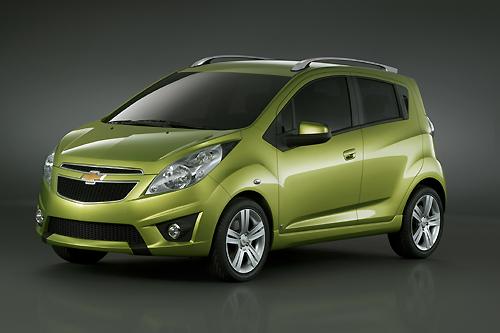
5. **Chevrolet Spark**The Chevrolet Spark, marketed as an entry-level subcompact car, often appeals to budget-conscious buyers seeking an economical mode of transportation. However, a closer look at its long-term maintenance costs reveals a surprising reality that diverges from initial expectations. Despite its modest purchase price, the Spark can demand a disproportionately high sum for upkeep, an important consideration for anyone looking for true long-term savings. This unexpected expense challenges the notion that all inexpensive cars automatically translate to inexpensive ownership.
While the absolute dollar amount for the Spark’s 10-year average maintenance and repair costs, at $6,038, may not seem as high as some luxury vehicles, its impact is amplified when considered against its very low MSRP. The car’s cost structure implies that, despite being a smaller and simpler vehicle, it doesn’t offer the robust long-term affordability one might anticipate. This makes it crucial for potential buyers to not just look at the raw numbers, but how they relate to the vehicle’s entry price point.
The financial equation becomes “hefty” when we examine the maintenance cost relative to its new price. At 44.3% of its $13,600 MSRP, the long-term maintenance expenses for the Chevrolet Spark represent a significant fraction of its initial cost. This high percentage indicates that nearly half of the money spent on buying the car will be spent again on maintaining it over a decade. For a vehicle positioned as an ultimate budget option, this ratio is a critical factor that could sway a purchase decision, highlighting that initial savings can be quickly eroded by ongoing costs.
Car Model Information: 2013 Chevrolet Express 2500 Work Van
Name: Chevrolet Spark
Manufacturer: unbulleted list
Production: 1998–2022
Class: City car
BodyStyle: hatchback
Layout: Front-engine, front-wheel-drive layout
Predecessor: Daewoo Tico
Categories: 2000s cars, 2010s cars, 2020s cars, All articles containing potentially dated statements, All articles with unsourced statements
Summary: The Chevrolet Sparkis a city car manufactured by General Motors’s subsidiary GM Korea from 1998 to 2022. The vehicle was developed by Daewoo and introduced in 1998 as the Daewoo Matiz. In 2002, General Motors purchased Daewoo Motors, which was marketing the vehicle with several GM marques and nameplates. The third generation was marketed globally, prominently under the Chevrolet brand in North America as the Chevrolet Spark and in Australia and New Zealand as the Holden Barina Spark. The fourth generation was launched in 2015, known as the Holden Spark in Australia and New Zealand. It also serves as the basis for the Opel Karl in Europe, Vauxhall Viva in the UK, and VinFast Fadil in Vietnam, the latter being manufactured under license. A limited-production all-electric version, the Chevrolet Spark EV, was released in the U.S. in selected markets in California and Oregon in June 2013. The Spark EV was the first all-electric passenger car marketed by General Motors since the EV1 was discontinued in 1999, and also the first offered for retail sale by GM (the EV1 was available only on lease). In the South Korean market, the Spark complies with South Korean “light car” (Korean: 경차, romanized: Gyeongcha) regulations, which regulate overall vehicle dimensions and engine capacity with tax and parking fee benefits. Production of the Spark at the Changwon, South Korea assembly plant ended in 2022. The plant would instead produce the second-generation Trax.
Get more information about: Chevrolet Spark
Buying a high-performing used car >>>
Brand: Chevrolet Model: Spark
Price: $8,450 Mileage: 211,498 mi.
Read more about: Beyond the Badge: Uncovering the Hidden Flaws in 14 Fan-Favorite Vehicle Models
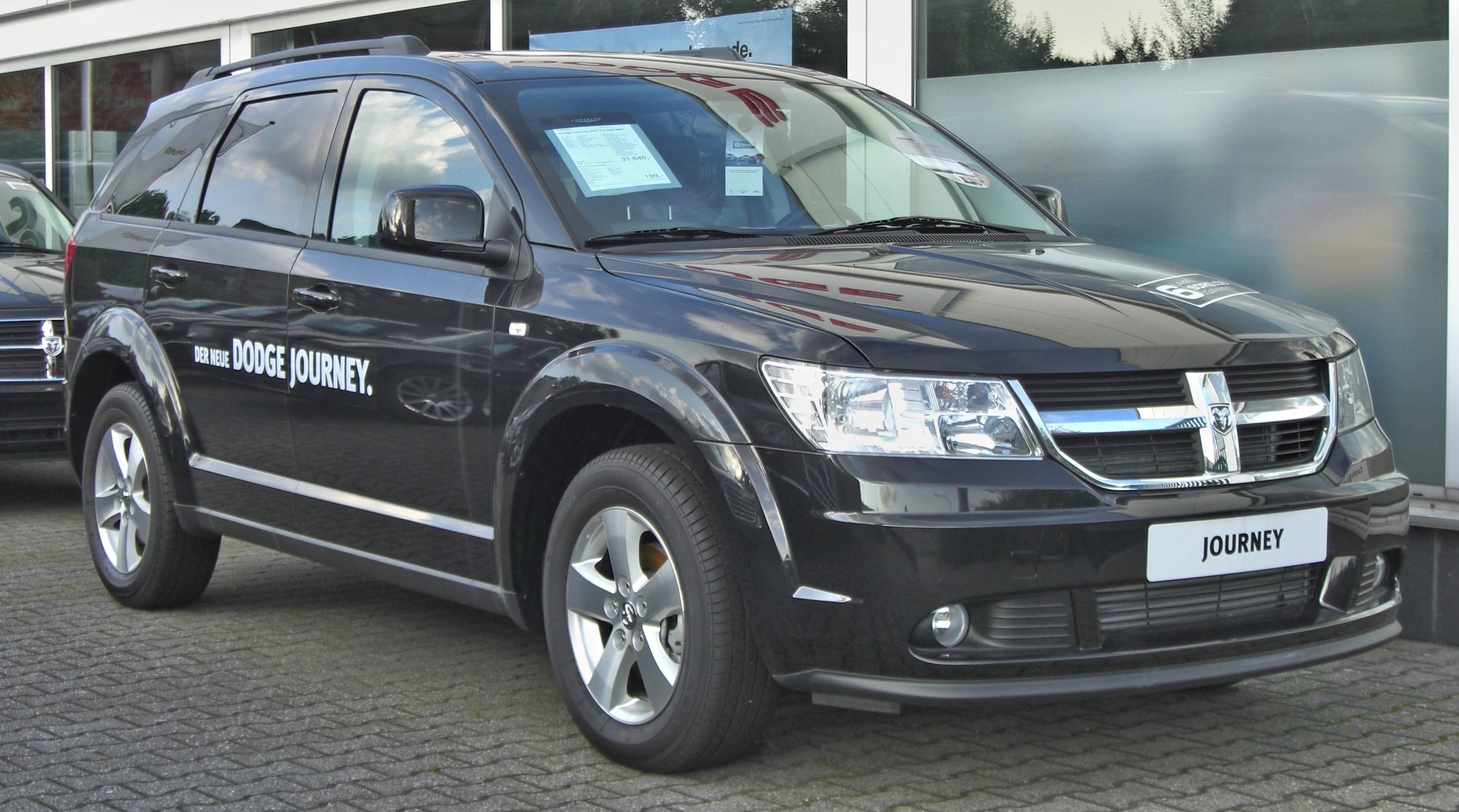
6. **Dodge Journey**The Dodge Journey, a mid-size crossover, has historically struggled to gain significant acclaim in the automotive market, and its maintenance profile does little to enhance its appeal. Often viewed as a utilitarian option, the Journey’s long-term upkeep costs add another layer of complexity for potential buyers. This model exemplifies a situation where a vehicle, already perceived as less desirable, further solidifies its position as a less-than-ideal choice due to its financial demands beyond the initial purchase.
With an average 10-year maintenance and repair cost of $10,133, the Dodge Journey places a substantial burden on its owners. This figure is a critical piece of information for anyone contemplating this vehicle, especially given its general market reputation. For consumers who might be “on the fence” about acquiring a Journey, these considerable ongoing expenses should serve as a significant deterrent, emphasizing that true vehicle value extends far beyond its initial sticker price.
The maintenance cost relative to the new price for the Dodge Journey comes in at 42.8% of its $23,675 MSRP. This means that over a decade, owners can expect to spend more than two-fifths of the vehicle’s purchase price purely on maintenance. This high percentage highlights that the Journey’s perceived affordability upfront is undermined by its substantial long-term operating costs. It’s a stark reminder that a vehicle’s true economic impact must be considered holistically, including its service requirements.
Car Model Information: 2018 Dodge Journey SE
Name: Dodge Journey
Caption: 2012 Dodge Journey
Manufacturer: Dodge
Aka: Fiat Freemont,Dodge JC (Japan),Dodge JCUV (China)
Production: 2008–2020
ModelYears: 2009–2020,2011–2015 (Freemont)
Assembly: Toluca, Mexico
Designer: Ryan Nagode
Class: Mid-size crossover SUV
BodyStyle: SUV
Platform: Mitsubishi GS platform
Related: Chrysler 200,Chrysler Sebring,Dodge Avenger
Layout: Front-engine, front-wheel-drive layout
Engine: ubl
Transmission: Ultradrive#40TES/41TES
Wheelbase: 2890 mm
Abbr: on
Order: flip
Length: 192.4 in
Width: 72.2 in
Height: 66.6 in
Weight: 3818 lb
Predecessor: Fiat Ulysse,Fiat Croma
Successor: Dodge Journey (2021)
Categories: 2010s cars, 2020s cars, All-wheel-drive vehicles, All articles with dead external links, All articles with unsourced statements
Summary: The Dodge Journey is a mid-size crossover SUV manufactured and marketed by Fiat Chrysler Automobiles’ Dodge brand for model years 2009 to 2020 over a single generation, with a facelift for the 2011 model year. The Journey was styled by Ryan Nagode, and was marketed globally in both left- and right-hand drive, including as the Fiat Freemont.
Internally identified as the JC49, the Journey shares FCA’s global D-segment platform with the Dodge Avenger and a nearly identical wheelbase to the outgoing short-wheelbase (SWB) Dodge Caravan.
Having debuted at the 2007 Frankfurt Motor Show, the Journey subsequently appeared at the 2009 Frankfurt Motor Show. All models were manufactured in Mexico at FCA’s Toluca Assembly facility, with just over 1.1 million manufactured before production ended in 2020.
Get more information about: Dodge Journey
Buying a high-performing used car >>>
Brand: Dodge Model: Journey
Price: $10,995 Mileage: 134,942 mi.
Read more about: From Showroom Shocker to Silver Screen Legend: 6 Automotive Flops That Conquered Hollywood
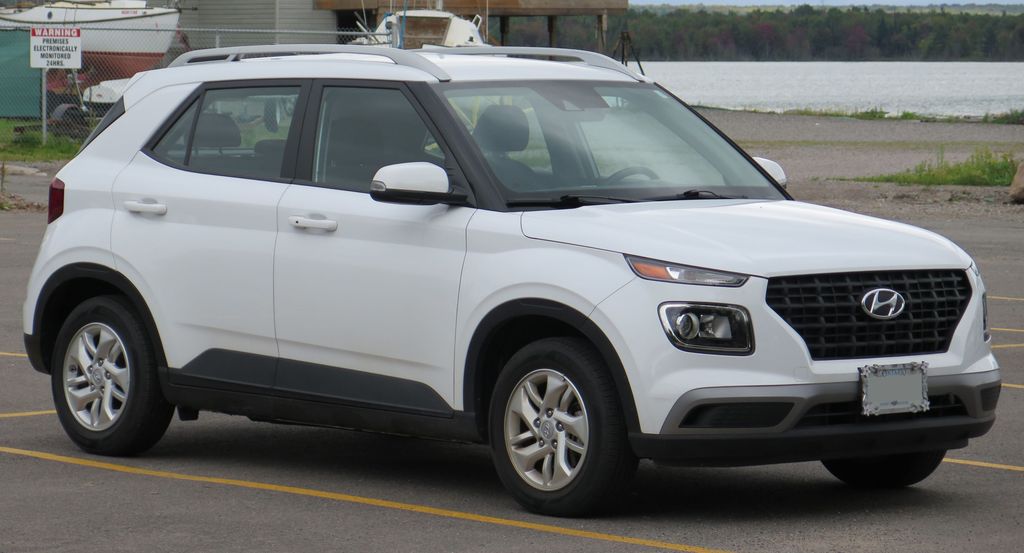
7. **Hyundai Venue**The Hyundai Venue, a relatively new entrant to the subcompact SUV market, debuted in 2020 with the aim of offering an affordable and stylish urban crossover. However, despite its recent introduction and compact dimensions, the Venue has quickly established a reputation for surprisingly high maintenance costs. This situation is particularly noteworthy because newer models are often expected to have lower repair needs initially, making the Venue’s performance in this regard a cause for concern.
What makes the Venue’s maintenance costs stand out is the alarming rate at which owners are experiencing significant expenditures. With an estimated 10-year average maintenance and repair cost of $7,834, the financial outlay is considerable, especially for a vehicle in its class. The context explicitly states that “Larger and more expensive vehicles don’t cost this much,” drawing a sharp contrast and highlighting the Venue’s unenviable position among its peers. This comparison suggests that its value proposition, particularly for long-term ownership, is significantly diminished.
The ratio of maintenance cost to new price for the Hyundai Venue is 41.7%, based on its $18,750 MSRP. This means that within a decade, owners are projected to spend well over two-fifths of the vehicle’s initial purchase price on keeping it in running order. For a model designed to be an accessible entry point into the SUV segment, this high percentage of ongoing costs can represent a substantial financial burden. It compels prospective buyers to carefully evaluate the Venue’s full cost of ownership before being swayed solely by its attractive sticker price.
The previous section detailed vehicles with unexpectedly high long-term maintenance costs, revealing potential financial pitfalls for car owners. Now, we turn our attention to the other end of the spectrum: models renowned for their exceptionally low upkeep expenses. For budget-conscious buyers, understanding which vehicles offer both reliability and affordability without compromise is crucial for making an informed decision. This in-depth analysis, based on rigorous data from CarEdge, will guide you to cars that truly respect your wallet over the long haul.
We’ve compiled a list of vehicles that consistently stand out for their minimal long-term maintenance needs, providing owners with peace of mind and substantial savings. These models demonstrate that a car can be both dependable and economical, offering lasting value that extends far beyond the showroom floor. Let’s delve into these top performers, which redefine what it means to be a “good, cheap car” in today’s market, ensuring your automotive investment is a wise one.
Car Model Information: 2022 Hyundai VENUE Limited
Name: Hyundai Venue
Caption: 2022 Hyundai Venue Preferred (Canada)
ModelCode: QX
Manufacturer: Hyundai Motor Company
Production: 2019–present
ModelYears: 2020–present
Assembly: ubl
Designer: Chan-Hee Lee, Duck-Hyun Hwang and Goo LeeCite patent
Country: US
Number: D901332
Title: Motor car
Pubdate: Mon Nov 09 2020 16:00:00 GMT-0800 (Pacific Standard Time)
Inventor1Last: Lee
Inventor1First: Chan-Hee
Inventor2Last: Hwang
Inventor2First: Duck-Hyun
Inventor3Last: Lee
Inventor3First: Goo
Assign1: Hyundai Motor Co.
Assign2: Kia Motors Corp.
Class: Subcompact crossover SUV
BodyStyle: Sport utility vehicle
Layout: Front-engine, front-wheel-drive
Platform: Hyundai-Kia K2 platform
Related: Hyundai Accent#HC,Kia Sonet
Engine: ubl
Transmission: ubl
Wheelbase: cvt
Length: cvt
Width: cvt
Height: cvt
Weight: cvt
Categories: 2020s cars, All articles containing potentially dated statements, All articles with unsourced statements, Articles containing Korean-language text, Articles containing potentially dated statements from 2023
Summary: The Hyundai Venue (Korean: 현대 베뉴) is a subcompact crossover SUV manufactured by South Korean manufacturer Hyundai. The Venue debuted at the 2019 New York International Auto Show as Hyundai’s smallest global crossover, prior to the introduction of other smaller SUVs such as the Casper and Exter.
As of 2023, the Venue is positioned below the Kona or Creta, and above the Exter or Casper in Hyundai’s international crossover lineup. It shares its platform with the fifth-generation Accent.
Get more information about: Hyundai Venue
Buying a high-performing used car >>>
Brand: Hyundai Model: Venue
Price: $18,290 Mileage: 45,836 mi.
Read more about: Navigating the Electric Future: Our Expert Picks for the Top 12 EVs You Can Buy Right Now
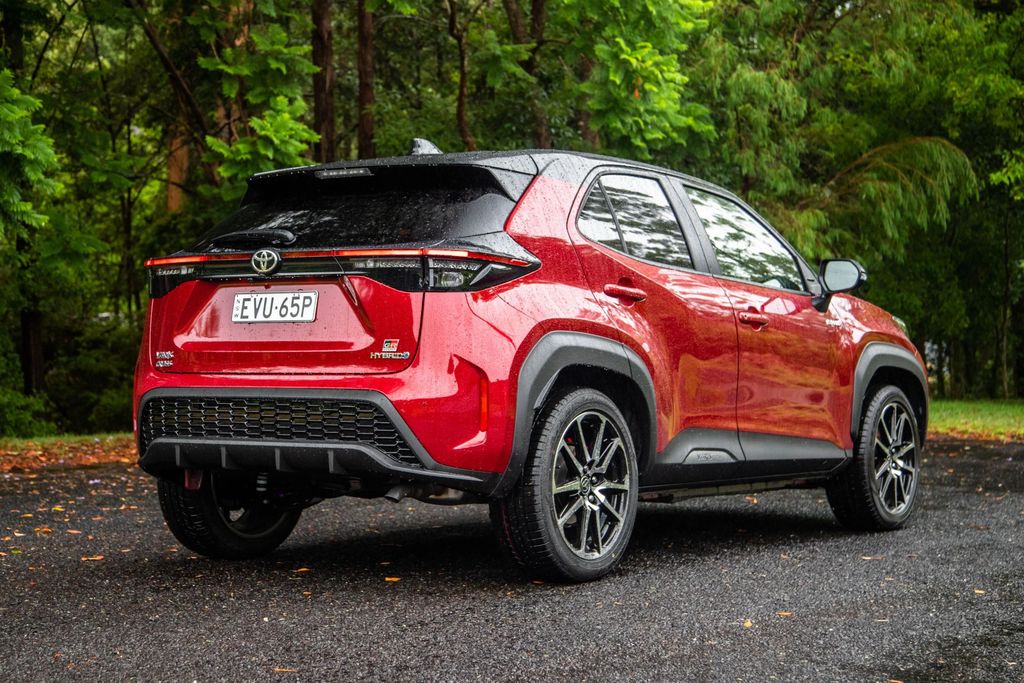
8. **Toyota Yaris**The Toyota Yaris, despite concluding its run in the United States market, stands as a testament to cost-effective and dependable vehicle design. This subcompact model consistently drew owners prioritizing economical transport, delivering significant savings both upfront and in critical long-term operational costs. For buyers focused on minimal upkeep, the Yaris perfectly showcases what thoughtful engineering can achieve in terms of affordability.
CarEdge data reveals the Yaris as an outstanding performer in maintenance affordability, with a projected 10-year average maintenance and repair cost of just $4,033. This remarkably low figure, especially against its $17,750 MSRP, translates to only 22.7% of its new price. This means owners can expect to spend less than a quarter of the initial investment on keeping the car running over a decade, underscoring its enduring reliability.
This impressive ratio highlights the Yaris’s inherent design for minimal financial burden. Even as it exits the new car market, its legacy as a cost-saving vehicle endures, making used models a particularly attractive option for budget-conscious consumers. The Yaris demonstrates that basic transportation can provide exceptional long-term value, with its efficiency and simplicity driving an exceptionally economical ownership profile.
Car Model Information: 2018 Toyota Yaris iA Base
Name: Toyota Yaris
Caption: 2020 Toyota Yaris Design Hybrid (MXPH11, UK)
Manufacturer: Toyota
Aka: unbulleted list
Production: unbulleted list
Class: Supermini
BodyStyle: unbulleted list
Predecessor: unbulleted list
Categories: 2000s cars, 2010s cars, 2020s cars, All-wheel-drive vehicles, All articles containing potentially dated statements
Summary: The Toyota Yaris is a supermini/subcompact car sold by Toyota since 1999, replacing the Starlet and Tercel. Up to 2019, Toyota had used the Yaris nameplate on export versions of various Japanese-market models, with some markets receiving the same vehicles under the Toyota Echo name through 2005. Starting in 2020, the Yaris nameplate began to be used in Japan, which replaced the Vitz nameplate. The Yaris nameplate has also been applied to other vehicles. From 1999 to 2005, the nameplate had been used for the Yaris Verso mini MPV sold in Europe, where it was known in Japan as the FunCargo. Since 2020, the nameplate has also been used for the subcompact crossover SUV offering called Yaris Cross. In North America, most Yaris sedan models sold from 2015 to 2020 and Yaris hatchbacks sold from 2019 until 2020 were restyled versions of the Mazda2, produced and developed by Mazda. In 2020, Toyota introduced the GR Yaris, which is a three-door performance-oriented variant of the XP210 series Yaris using the Gazoo Racing branding. It is built as a homologation model for the FIA World Rally Championship. The name “Yaris” is derived from “Charis”, the singular form of Charites, the Greek goddesses of charm and beauty. As of March 2020, the Yaris has sold 8.71 million units worldwide.
Get more information about: Toyota Yaris
Buying a high-performing used car >>>
Brand: Toyota Model: Yaris
Price: $12,498 Mileage: 78,820 mi.
Read more about: Beyond the Badge: Uncovering the Hidden Flaws in 14 Fan-Favorite Vehicle Models
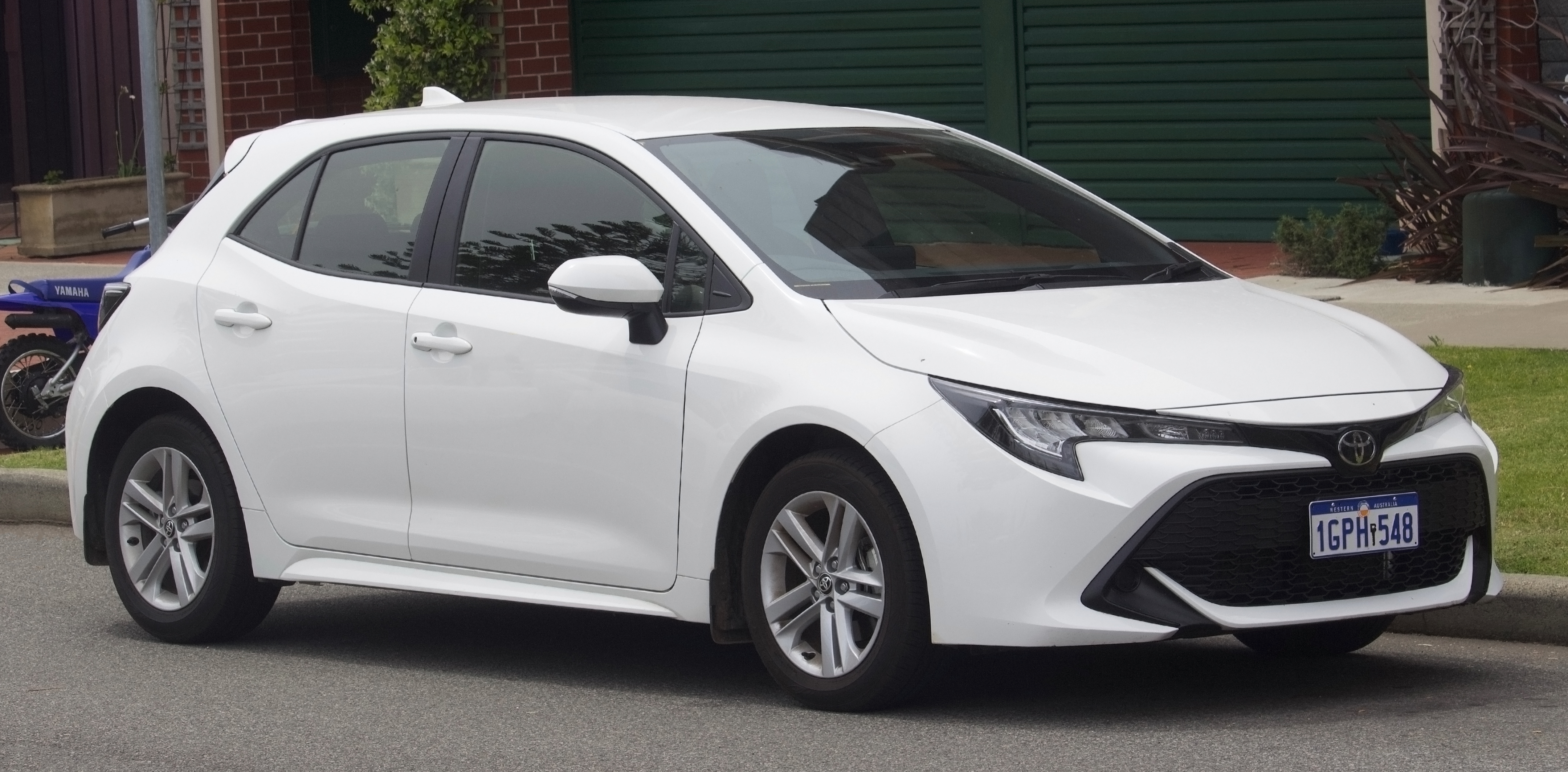
9. **Toyota Corolla**A perennial favorite among practical car shoppers, the Toyota Corolla has solidified its position as a benchmark for efficiency, reliability, and, crucially, low maintenance costs. It may not be the flashiest vehicle on the road, but its consistent performance and sensible engineering appeal to a broad demographic looking for a car that simply “gets the job done efficiently and reliably.” The Corolla’s enduring popularity is directly linked to its predictable, budget-friendly ownership experience.
Our analysis shows that the Toyota Corolla is expected to incur a 10-year average maintenance and repair cost of $4,083. This figure, very close to the Yaris, further cements Toyota’s dominance in offering vehicles with incredibly low upkeep expenses. For a vehicle with an MSRP of $20,025, this translates to a mere 20.3% of its new price allocated to maintenance over a decade, a remarkably low percentage that ensures considerable savings for owners.
The Corolla’s reputation for unwavering dependability is well-earned, contributing significantly to its low long-term costs. Its widespread availability of parts and a well-understood maintenance schedule mean that servicing is both straightforward and economical. This makes the Corolla an exceptional choice for first-time buyers, families, and anyone seeking a no-nonsense vehicle that delivers consistent performance without unexpected financial surprises, truly embodying practical and worry-free driving.
Car Model Information: 2023 Toyota Corolla LE
Name: Toyota Corolla
Caption: Twelfth generation model (2020, hatchback)
Manufacturer: Toyota
Aka: unbulleted list
Production: November 1966 – present
Class: unbulleted list
Predecessor: Toyota Publica
Categories: 1970s cars, 1980s cars, 1990s cars, 2000s cars, 2010s cars
Summary: The Toyota Corolla is a series of compact cars (formerly subcompact) manufactured and marketed globally by the Japanese automaker Toyota Motor Corporation. Introduced in 1966, the Corolla was the best-selling car worldwide by 1974 and was one of the best-selling cars in the world until 1997, when it surpassed the Volkswagen Beetle as the world’s best-selling automobile of all time. Toyota reached the milestone of 50 million Corollas sold over twelve generations in 2021. The name Corolla is part of Toyota’s naming tradition of using names derived from the Toyota Crown for sedans, with “corolla” Latin for “small crown”. The Corolla has always been exclusive in Japan to Toyota Corolla Store locations, and manufactured in Japan with a twin, called the Toyota Sprinter until 2000. From 2006 to 2018 in Japan and much of the world, and from 2018 to 2020 in Taiwan, the hatchback companion had been called the Toyota Auris. Early models were mostly rear-wheel drive, while later models have been front-wheel drive. Four-wheel drive versions have also been produced, and it has undergone several major redesigns. The Corolla’s traditional competitors have been the Nissan Sunny, introduced the same year as the Corolla in Japan and the later Nissan Sentra, Subaru Leone, Honda Civic and Mitsubishi Lancer. The Corolla’s chassis designation code is “E”, as described in Toyota’s chassis and engine codes.
Get more information about: Toyota Corolla
Buying a high-performing used car >>>
Brand: Toyota Model: Corolla
Price: $19,990 Mileage: 44,353 mi.
Read more about: The Great Automotive Shake-Up: 15 Brands Navigating the U.S. Market’s Shifting Sands
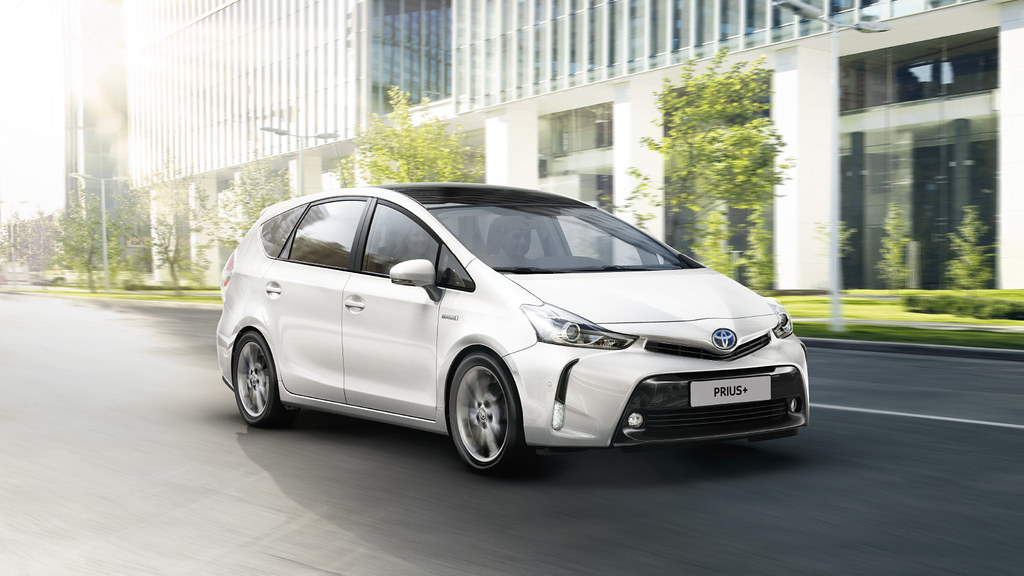
10. **Toyota Prius**The Toyota Prius is widely recognized as the pioneer of hybrid technology, but its value extends far beyond exceptional fuel efficiency. This innovative vehicle consistently ranks among the most affordable cars to maintain, offering a compelling blend of environmental responsibility and economic practicality. Owners of the Prius benefit not only from significant savings at the fuel pump but also from reassuringly low maintenance and repair expenditures over its long lifespan.
Over a ten-year period, the Toyota Prius is projected to have an average maintenance and repair cost of $4,098. This impressive figure places it firmly among the leaders in cost-effective ownership, especially for a vehicle incorporating advanced hybrid technology. When evaluated against its MSRP of $24,525, these maintenance costs amount to just 16.7% of its initial purchase price, challenging the perception that hybrids are inherently more expensive to maintain.
The Prius’s robust design and Toyota’s renowned reliability contribute directly to this remarkable affordability. Its regenerative braking system, for instance, often extends the life of traditional brake components, reducing the frequency and cost of replacements. The hybrid powertrain, while technically advanced, has proven to be incredibly durable, providing a compelling argument for its long-term value. For those seeking maximum savings across both fuel and upkeep, the Prius stands out as an intelligent and sustainable choice.
Car Model Information: 2023 Toyota Prius Prime XSE Premium
Name: Toyota Prius
Caption: Fifth generation Prius (XW60)
Manufacturer: Toyota
Production: December 1997 – present
ModelYears: 2001–present (US)
Class: ubl
BodyStyle: unbulleted list
Layout: unbulleted list
Sp: uk
Categories: 2000s cars, 2010s cars, 2020s cars, All-wheel-drive vehicles, All Wikipedia articles in need of updating
Summary: The Toyota Prius ( PREE-əss) is a compact/small family liftback (supermini/subcompact sedan until 2003) produced by Toyota. The Prius has a hybrid drivetrain, which combines an internal combustion engine and an electric motor. Initially offered as a four-door sedan, it has been produced only as a five-door liftback since 2003. The Prius was developed by Toyota to be the “car for the 21st century”; it was the first mass-produced hybrid vehicle, first going on sale in Japan in 1997 at all four Toyota Japan dealership chains, and subsequently introduced worldwide in 2000. In 2011, Toyota expanded the Prius family to include the Prius v, an MPV, and the Prius c, a subcompact hatchback. The production version of the Prius plug-in hybrid was released in 2012. The second generation of the plug-in variant, the Prius Prime, was released in the U.S. in November 2016. The Prius family totaled global cumulative sales of 6.1 million units in January 2017, representing 61% of the 10 million hybrids sold worldwide by Toyota since 1997. Toyota sells the Prius in over 90 markets, with Japan and the United States being its largest markets.
Get more information about: Toyota Prius
Buying a high-performing used car >>>
Brand: Toyota Model: Prius
Price: $34,014 Mileage: 14,857 mi.
Read more about: Beyond the Quarter-Million Mark: Our Shortlist of Cars Engineered for Extreme Longevity
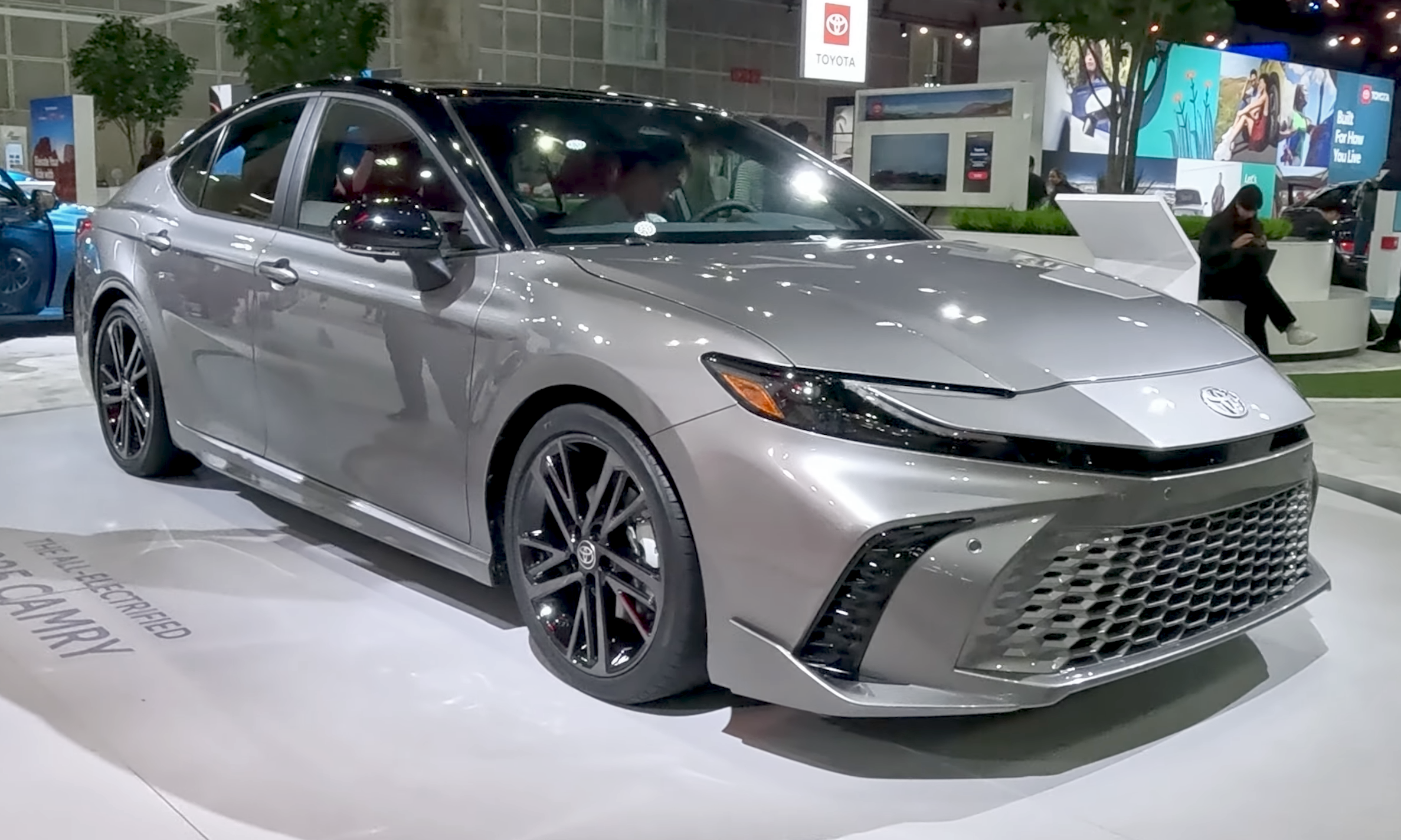
11. **Toyota Camry**Often referred to as the “big brother” to the Corolla, the Toyota Camry is another mid-size sedan that exemplifies Toyota’s commitment to low operating costs and reliable long-term performance. While offering a more spacious and refined experience than its compact sibling, the Camry manages to keep maintenance expenses remarkably similar, making it an attractive option for those desiring more room without a substantial increase in upkeep bills.
The Camry is projected to incur an average 10-year maintenance and repair cost of $4,211. This figure is only slightly higher than that of the Corolla, showcasing its impressive efficiency in the mid-size segment. With an MSRP of $25,045, the long-term maintenance costs for the Camry represent a mere 16.8% of its new price. This percentage is exceptionally low for a vehicle of its size and capability, making it a standout in terms of overall ownership value.
A hallmark of the Toyota Camry is its unwavering dependability, which translates directly into fewer unexpected repairs and lower maintenance requirements. Whether equipped with the base four-cylinder engine or the optional V6, the Camry delivers consistent performance. Its reputation for longevity means owners can confidently plan on many years of affordable driving, reinforcing its status as one of the most economically sensible and reliable sedans on the market, blending comfort with financial prudence.
Car Model Information: 2019 Toyota Camry LE
Name: Toyota Camry
Caption: 2018 Toyota Camry Ascent (ASV70, Australia)
Manufacturer: Toyota
Production: March 1982 – present
Aka: ubl
Class: ubl
Layout: ubl
Predecessor: ubl
Successor: Toyota Avensis (T250)
Categories: 1990s cars, 2000s cars, 2010s cars, 2020s cars, All-wheel-drive vehicles
Summary: The Toyota Camry is an automobile sold internationally by the Japanese auto manufacturer Toyota since 1982, spanning multiple generations. Originally compact in size (narrow-body), the Camry has grown since the 1990s to fit the mid-size classification (wide-body)—although the two widths co-existed in that decade. Since the release of the wide-bodied versions, Camry has been extolled by Toyota as the firm’s second “world car” after the Corolla. As of 2022, the Camry is positioned above the Corolla and below the Avalon or Crown in several markets. In Japan, the Camry was once exclusive to Toyota Corolla Store retail dealerships. Narrow-body cars also spawned a rebadged sibling in Japan, the Toyota Vista—also introduced in 1982 and sold at Toyota Vista Store locations. Diesel fuel versions have previously retailed at Toyota Diesel Store. The Vista Ardeo was a wagon version of the Vista V50.
Get more information about: Toyota Camry
Buying a high-performing used car >>>
Brand: Toyota Model: Camry
Price: $21,199 Mileage: 55,414 mi.
Read more about: 12 Vehicles That Will Test Your Patience (and Your Wallet) with Never-Ending Electronic Glitches
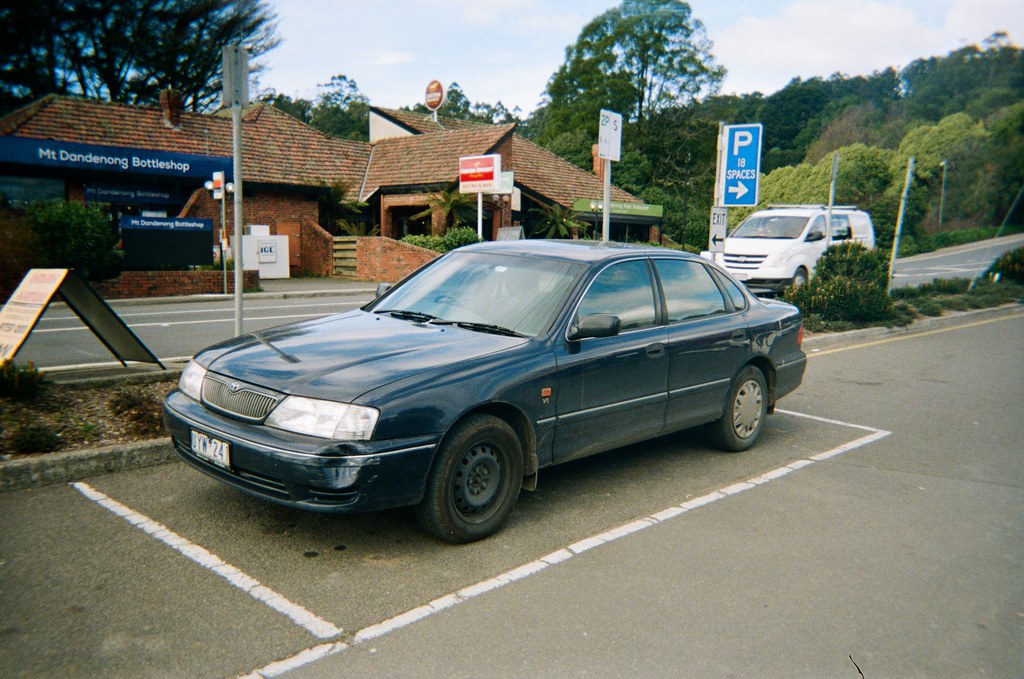
12. **Toyota Avalon**Positioned as the luxury-minded sedan within Toyota’s lineup, the now-discontinued Toyota Avalon offers an unexpected advantage: exceptionally low maintenance costs for a vehicle of its class. While it treats occupants to a roomy cabin, a serene ride, and Lexus-like comfort, it manages to defy the typical luxury car trend of exorbitant upkeep expenses. The Avalon truly proves that premium features don’t necessarily have to come with a premium on long-term service.
Our analysis indicates that the Toyota Avalon has an average 10-year maintenance and repair cost of $4,409. This figure is remarkably modest, especially considering its larger size and upscale amenities. When measured against its MSRP of $36,125, the long-term maintenance expenditures amount to an impressively low 12.2% of its original purchase price. This makes the Avalon a true outlier, offering luxury without the typical financial burden often associated with it.
The secret to the Avalon’s affordability lies in its shared mechanical components with other reliable Toyota models, such as the Camry. This strategic commonality ensures that parts are readily available and servicing is straightforward, contributing to its minimal upkeep. For discerning buyers who appreciate a refined driving experience and spacious comfort but are wary of the steep maintenance costs of traditional luxury brands, the Avalon presents a compelling and budget-friendly alternative that continues to deliver exceptional value.
Car Model Information: 2016 Toyota Avalon XLE
Name: Toyota Avalon
Caption: Toyota Avalon XSE (GSX50, Canada)
Manufacturer: Toyota
Aka: Toyota Pronard (Japan, 2000–2004)
Production: 1994–present
ModelYears: 1995–2022 (US)
Class: Full-size car
BodyStyle: Sedan (automobile)
Layout: unbulleted list
Predecessor: unbulleted list
Successor: unbulleted list
Categories: 2000s cars, 2010s cars, 2020s cars, All-wheel-drive vehicles, All Wikipedia articles written in American English
Summary: The Toyota Avalon is a full-size sedan manufactured by Toyota, as its largest front-wheel drive sedan; also its flagship in the United States, Canada, China and the Middle East. The Avalon was also manufactured in Australia from April 2000 until June 2005, when it was replaced in November 2006 by the Aurion. The first production Avalon was manufactured in September 1994 at the TMMK assembly line in Georgetown, Kentucky, where subsequent generations have been manufactured. Toyota marketed the front-drive Avalon as a replacement for its rear-drive Cressida, a model discontinued for the American market in 1992. The Cressida was an upper-level, mid-size, rear-wheel drive sedan. The Avalon has at times overlapped Toyota’s models using the same platform, including the Camry V6 and the Lexus ES. The third-generation and subsequent generations was distinguished by offering extra legroom due to its extended-length chassis. From 2013, the Lexus ES was moved to the extended platform to match the Avalon. As of 2013, the Avalon was sold in the United States, Canada, China, South Korea and the Middle East. It was discontinued in the United States in 2022. Avalon is a legendary island of the Arthurian legend, fitting it in with Toyota’s tradition of naming their sedans after variants of the word for “crown” in various languages (Crown, Corona, Camry, Corolla), types of crowns (Tiara), or other aspects of royalty (Scepter).
Get more information about: Toyota Avalon
Buying a high-performing used car >>>
Brand: Toyota Model: Avalon
Price: $14,500 Mileage: 90,931 mi.
Read more about: The True Cost of Elegance: 10 Luxury Cars That Deliver Joy or Drain Your Wallet on Maintenance
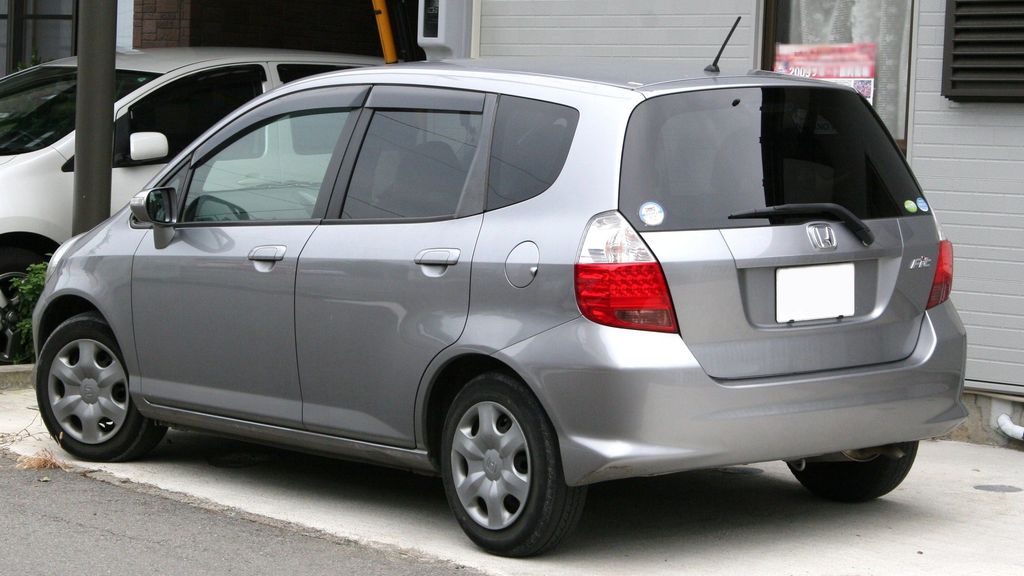
13. **Honda Fit**The Honda Fit, celebrated for its ingenious space-saving design and surprisingly comfortable interior, adds another significant highlight to its impressive resume: remarkably low maintenance costs. This subcompact hatchback has garnered considerable attention for its practicality and versatility, and its economic ownership profile further solidifies its appeal, particularly for urban drivers and those seeking maximum utility from a small footprint.
Over a decade of ownership, the Honda Fit is projected to accumulate an average of $5,033 in maintenance and repair costs. This figure is extremely competitive within its segment and among all vehicles, positioning the Fit as an excellent long-term investment. Against its MSRP of $16,190, these upkeep costs represent 31.0% of its new price. While this percentage is higher than some other Toyotas on this list, it remains very attractive for a vehicle of its utility and robust resale value.
The Honda Fit’s design philosophy emphasizes efficiency and durability, contributing directly to its minimal maintenance needs. Its clever “Magic Seat” system allows for unparalleled cargo flexibility, making it an incredibly versatile companion for various lifestyles. Combined with Honda’s well-earned reputation for reliability, the Fit stands out as a smart choice for consumers who need a compact, comfortable, and highly economical vehicle that will serve them faithfully for years without demanding extensive financial outlays for service.
Car Model Information: 2020 Honda Fit LX
Name: Honda Fit/jazz
Manufacturer: Honda
Aka: Dongfeng Honda
Production: June 2001 – present
Class: Subcompact car
BodyStyle: hatchback
Layout: Front-engine, front-wheel-drive layout,Front-engine, four-wheel-drive layout
Platform: Honda Global Small Car
Predecessor: Honda Logo
Successor: Honda City#GN
Categories: 2010s cars, 2020s cars, ASEAN NCAP superminis, All-wheel-drive vehicles, All Wikipedia articles written in British English
Summary: The Honda Fit or Honda Jazz is a small car manufactured and marketed by Honda since 2001 over four generations. It has a five-door hatchback body style and is considered a supermini in the United Kingdom, a subcompact car in the United States, and a light car in Australia. Marketed worldwide and manufactured at ten plants in eight countries, sales reached almost 5 million by mid-2013. Honda uses the “Jazz” nameplate in Europe, Oceania, the Middle East, Africa, Hong Kong, Macau, Southeast Asia and India; and “Fit” in Japan, Sri Lanka, China, Taiwan and the Americas. Sharing Honda’s global small car platform with the City, Airwave, first-generation Mobilio, Freed and HR-V/Vezel, the Fit is noted for its one-box or monospace design; forward-located fuel tank; configurable seats that fold in several ways to accommodate boot space in varying shapes and sizes— and boot volume competitive to larger vehicles. Honda released hybrid petrol-electric versions of the Fit in Japan in October 2010 and in Europe in early 2011. In 2012, Honda released the Fit EV in the United States and Japan, a limited-production all-electric version based on the second-generation, widely regarded as a compliance car. The fourth-generation model released in 2019 is currently sold in Japan, Europe, China, Taiwan, South Africa, Brunei and Singapore. Starting from 2020, the model was phased out in most Southeast Asian and Latin American countries, to be replaced by the larger City Hatchback, while it was withdrawn entirely from the North American market due to falling demand within the subcompact segment.
Get more information about: Honda Fit
Buying a high-performing used car >>>
Brand: Honda Model: Fit
Price: $16,980 Mileage: 70,292 mi.
Read more about: Beyond the Badge: Uncovering the Hidden Flaws in 14 Fan-Favorite Vehicle Models
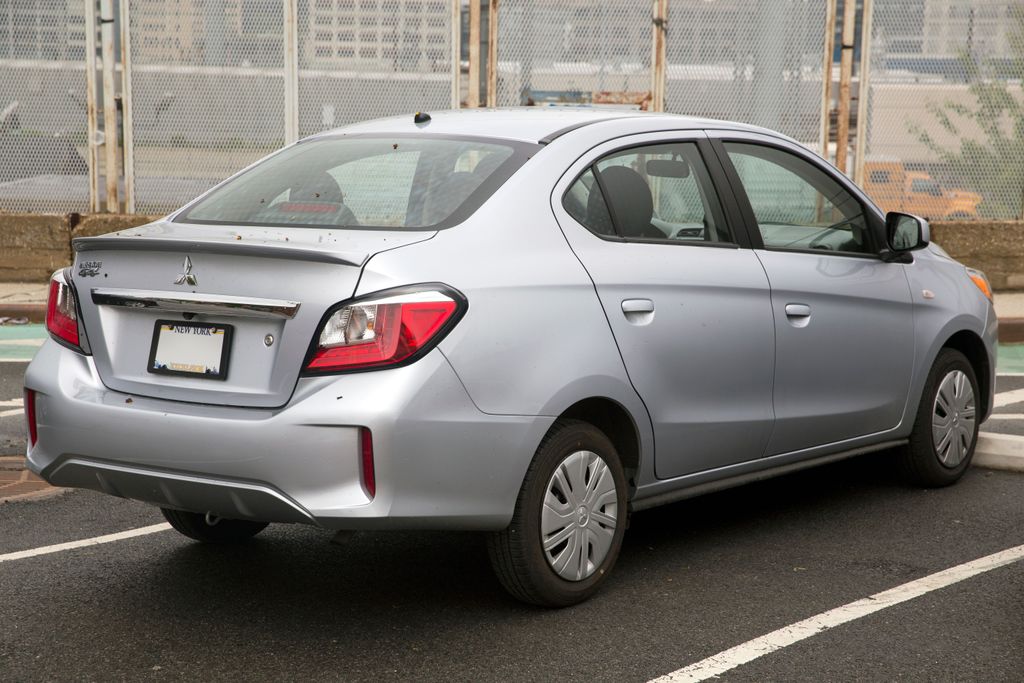
14. **Mitsubishi Mirage**The Mitsubishi Mirage, in its hatchback form, is often hailed as the very definition of basic transportation, appealing strongly to budget-conscious owners. What might initially seem like a modest vehicle reveals its true strength in its long-term ownership costs. The Mirage proves that a car doesn’t need to be expensive or feature-laden to offer exceptional value, especially when it comes to keeping maintenance expenses to an absolute minimum.
With an average 10-year maintenance and repair cost of just $5,062, the Mitsubishi Mirage stands as one of the most inexpensive cars to maintain on the market. This figure dramatically reinforces its appeal as a genuinely cheap car to own. For a vehicle with an MSRP of $14,295, these long-term costs amount to 35.4% of its original purchase price. While a higher percentage than some other economy cars, this still represents a highly affordable total cost of ownership for such an accessible vehicle.
The Mirage’s straightforward engineering and tiny three-cylinder engine contribute to its low upkeep profile, as there are fewer complex components that can go wrong. It’s built for simplicity and durability, making it an ideal choice for city driving and for individuals who prioritize maximizing savings on both initial purchase and ongoing operational costs. For drivers seeking a reliable, no-frills vehicle that demands very little in return, the Mitsubishi Mirage is an undeniable champion of affordability and low maintenance.
As we’ve navigated the diverse landscape of automotive ownership, from vehicles that demand significant long-term investment to those that offer impressive affordability, a clear pattern emerges. Making an informed car-buying decision extends far beyond the sticker price; it encompasses a holistic understanding of true ownership costs, particularly maintenance and repairs. The data from CarEdge unequivocally shows that while some cars can become unexpected money pits, many others provide steadfast reliability and minimal upkeep, ensuring your budget remains intact over the years.
Read more about: The Great Automotive Shake-Up: 15 Brands Navigating the U.S. Market’s Shifting Sands
For consumers, this deep dive into maintenance costs provides invaluable insights. Whether you’re seeking a robust work truck, a luxurious sedan, a versatile SUV, or an economical daily driver, recognizing the long-term financial implications is crucial. By choosing wisely, opting for models renowned for their durability and low service requirements, you can drive with confidence, knowing your vehicle is a true asset that delivers consistent value, mile after mile, year after year. The journey of car ownership should be one of enjoyment, not financial strain, and with this knowledge, you are empowered to make choices that serve both your needs and your wallet.



